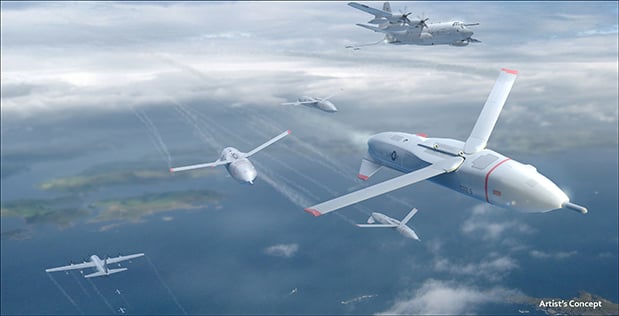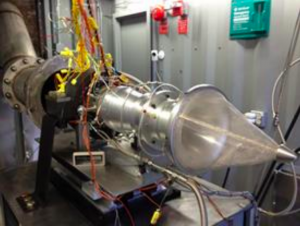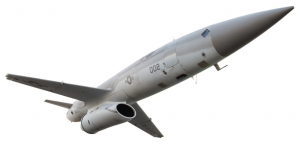Small Jets For Big Swarms: Kratos Buys Turbine Tech Company
Posted on
WASHINGTON: Eager to expand its drone and missile business for the coming era of swarm warfare, defense contractor Kratos just acquired a controlling interest in a small Florida firm that’s developing small, affordable, but highly efficient jet engines.
“These are engines that would fit on your tabletop and would go into things even smaller than a Predator,” said Stacey Rock, who’ll head the new Kratos Turbine Technologies division. “And this small jet engine market is growing: If you look at the systems that are coming out over the next five years, here’s hundreds of millions of dollars [of work]. We don’t want hundreds of ‘em, we want thousands… to overwhelm the threat.”
Sure, the $60 million deal is just a blip on the radar of titans like Lockheed Martin. And the engines in question produce at most 1,000 pounds of thrust, enough to power a modest drone or a large missile — like the Tomahawk or JASSM. For perspective that’s less than 3 percent of the power of a jet fighter like the F-35. But small can be beautiful, especially in an era of warfare where speed, stealth, and precision may win more battles than massed force.
What matters here is the quality of the technology, not the quantity. Kratos’s acquisition, formerly Florida Turbine Technologies — about 250 employees led by a husband-and-wife pair of engineers — embodies three big trends for the Pentagon: small business innovation, customizable, modular manufacturing, and 3D printing.
3D printing, aka additive manufacturing, has gone from buzzword to trend to widespread reality in a range of fields, with even elementary school kids now designing and printing simple plastic models. 3D printing things with moving parts, however, is much harder. 3D printing components of jet engines, which must endure ferocious force and heat, is hardest of all. But that’s exactly what KTT is doing, and the technique is critical to making their engines produce enough power with the small size and low cost required to realize the US military’s vision of large fleets of effectively expendable drones, too numerous for enemies to track them all, let alone shoot them down.
One example: KTT is 3D printing “unique bearing designs” — details undisclosed, but they’d be impossible to build with normal techniques — that should eliminate the need for oil in turbochargers. That would allow for a less complicated engine that’s easier to maintain and less likely to break down. KTT is also 3D printing much lighter recuperators — basically, systems that save energy by capturing heat from the exhaust, which would otherwise be wasted, and recycling it to warm incoming air for easier combustion.
Now, caveat emptor: Florida/Kratos Turbine Technologies is developing these engines; they haven’t perfected them yet. So Kratos is taking a risk on a promising but unproven technology. If it pans out, however, Kratos will have a big advantage: Not only will they be able to build their own engines in-house — currently the only major component of their drones they have to outsource — their engines will also be more fuel-efficient than those from competitors, allowing for longer range per pound of aircraft.
The other attraction of this technology is that KTT isn’t developing an engine. They’re developing a family of engines. If this works — and again, that isn’t certain — they’ll have a common core that can easily be customized for different applications by adjusting the inlets, compressors, combustion chamber, exhaust nozzles, and so on. You want a long-range reconnaissance drone that can slowly circle over a target area for hours, then do it again tomorrow and the day after and the day after that? Or maybe a missile that only makes one trip, one way, in its entire life but has to make it really fast? The same basic tech could be tweaked to do either.
That kind of customization was unheard of in the era of mass production, when America was the arsenal of democracy. But this flexible, adaptable approach is exactly what the Defense Department wants as it struggles to keep up with rapidly changing technologies, tactics, and threats. Instead of building thousands of identical drones, you could build dozens of variants, each tailored to the mission and target.
There are limits to the Kratos jets’ adaptability. They can’t scale up to power fighter planes, nor can they scale down so far as to replace the tiny propeller engines powering mini-drones and quadcopters. And there are limits to the company’s ambitions. They expect to remain a subcontractor to larger firms like Lockheed, Raytheon, or Dynetics, for which they’re building the Gremlin air-launched drone. But if Kratos can get the engine technology to deliver as promised, their small drones could have a big impact on future battlefields.
Subscribe to our newsletter
Promotions, new products and sales. Directly to your inbox.




